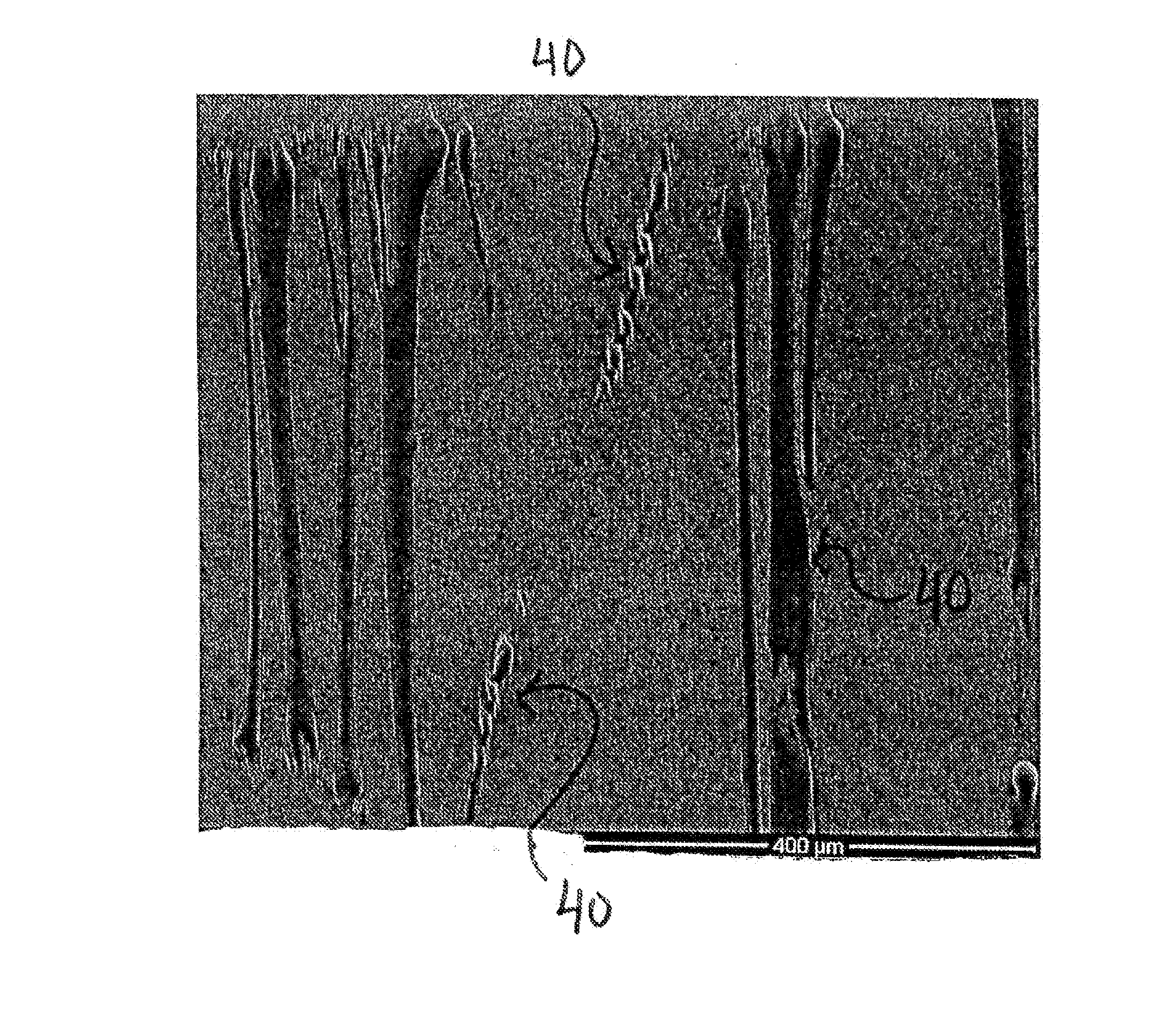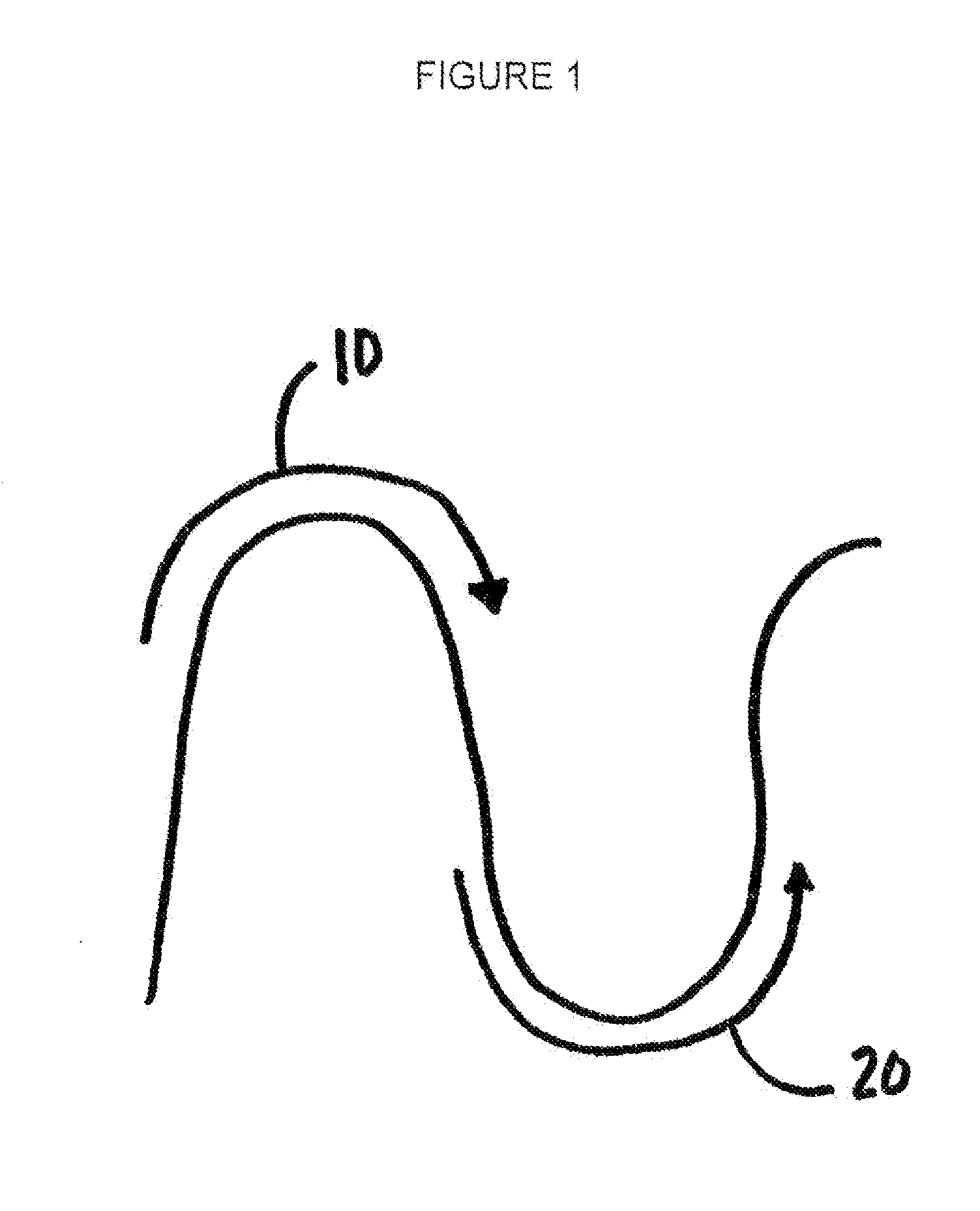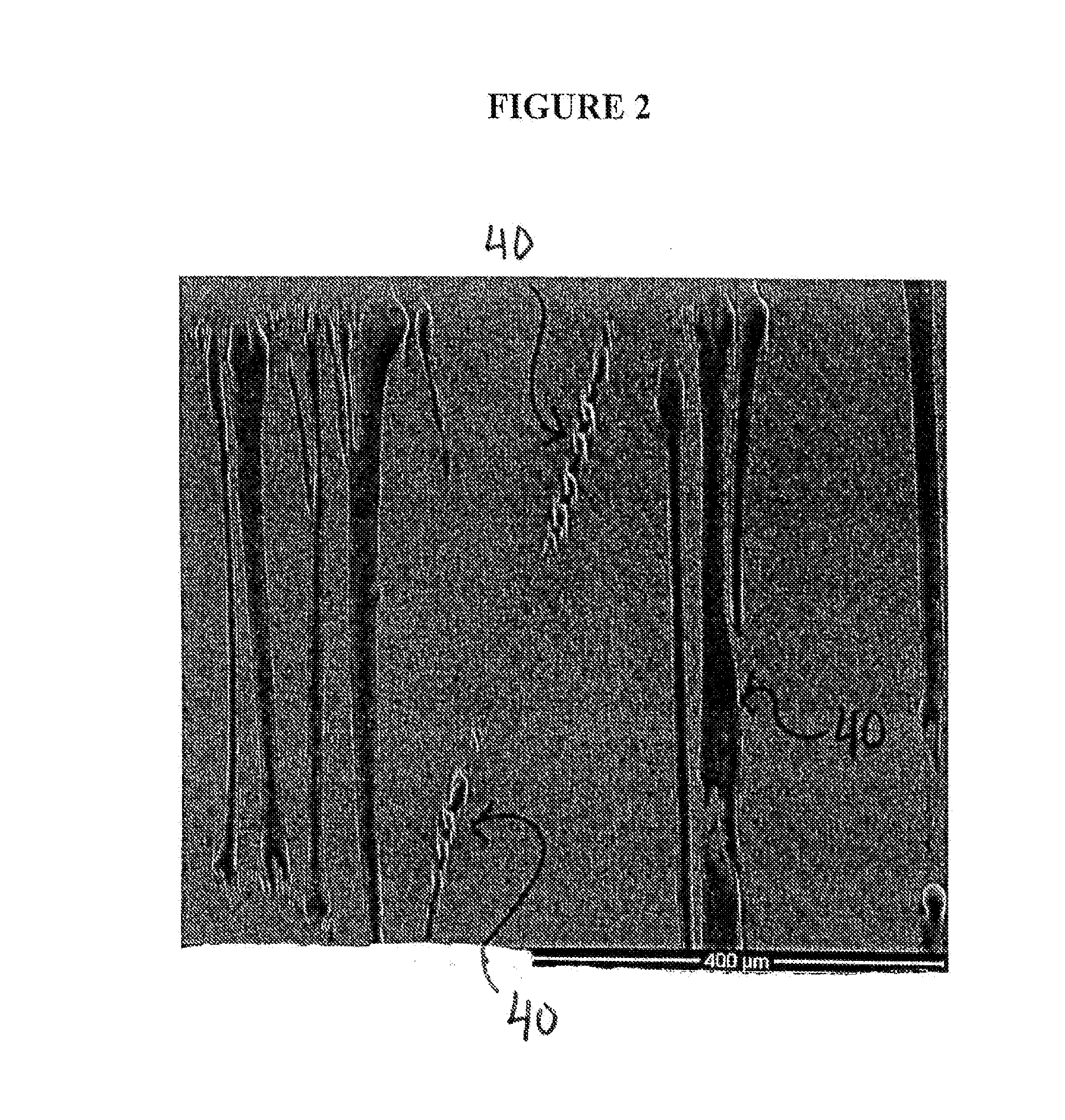Articles Including Expanded Polytetrafluoroethylene Membranes with Serpentine Fibrils and Having a Discontinuous Fluoropolymer Layer Thereon
a technology of expanded polytetrafluoroethylene and serpentine fibrils, which is applied in the field of expanded polytetrafluoroethylene (eptfe) membranes with serpentine fibrils and discontinuous fluoropolymer layers and to materials made therefr, can solve the problems of exceptionally weak membranes in this direction and uniaxial expansion materials that can exhibit high elongation
- Summary
- Abstract
- Description
- Claims
- Application Information
AI Technical Summary
Benefits of technology
Problems solved by technology
Method used
Image
Examples
example 1
[0056]Expanded Fluoropolymer Membrane with Discontinuous FEP
[0057]Fine powder of PTFE polymer as described and taught in U.S. Pat. No. 6,541,589 was blended with Isopar K (Exxon Mobil Corp., Fairfax, Va.) in the proportion of 0.209 g / g of fine powder. The lubricated powder was compressed into a cylinder to form two pellets that were placed into an oven set at 49° C. for approximately 12 hours. The compressed and heated pellets were ram extruded to produce tape approximately 16.2 cm wide by 0.70 mm thick. The two extruded tapes were then layered and rolled down between compression rolls to a thickness of 0.381 mm. The calendared tape was then transversely stretched to 32 cm (i.e., at a ratio of 2.0:1) and dried at a temperature of approximately 230° C. An approximately 12.5 um thick by approximately 28 cm wide FEP film available from Dupont De Numerous, Inc., (Wilmington, Del.) was obtained. The calendered PTFE tape and the FEP film were laminated together during a longitudinal expan...
example 2
[0060]The retracted membrane of Example 1 was used to create a covered stent device. An 8 mm diameter×6 mm long stainless steel stent (Cordis Palmaz-Schatz Transhepatic Biliary stent, Cat. No. PS5608A, Lot No. R0599853, Cordis Corp., Bridgewater, N.J.) was obtained. The retracted membrane of Example 1 was used to cover the stent as follows. A tube was constructed from a 150 mm wide sample of the membrane. A 4 mm diameter, 150 mm long stainless steel mandrel was obtained. Twelve layers of the 150 mm wide membrane were circumferentially wrapped around the mandrel such that the retracted direction of the membrane was oriented along the circumferential axis of the mandrel. The FEP side of the membrane faced outward. A soldering iron set to approximately 320° C. was used to spot tack the free edge of the film. A 1.3 cm wide slit of an ePTFE film was wrapped on each end of the tube to avoid longitudinal retraction during subsequent heating. The assembly was then placed into an oven set to...
PUM
| Property | Measurement | Unit |
|---|---|---|
| width | aaaaa | aaaaa |
| width | aaaaa | aaaaa |
| diameter | aaaaa | aaaaa |
Abstract
Description
Claims
Application Information
 Login to View More
Login to View More - R&D
- Intellectual Property
- Life Sciences
- Materials
- Tech Scout
- Unparalleled Data Quality
- Higher Quality Content
- 60% Fewer Hallucinations
Browse by: Latest US Patents, China's latest patents, Technical Efficacy Thesaurus, Application Domain, Technology Topic, Popular Technical Reports.
© 2025 PatSnap. All rights reserved.Legal|Privacy policy|Modern Slavery Act Transparency Statement|Sitemap|About US| Contact US: help@patsnap.com



